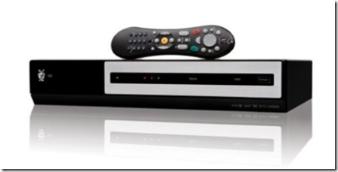InteracTiVoty - Reaching the Unreachable: A Strategy for DVR-Based Advertising - Todd Juenger - MediaBizBlogger

As a guy who works at a DVR company and oversees TiVo's Audience Research & Measurement business, I can imagine what you're expecting to read -- a rant about why set-top-box data needs to be widely adopted, and how DVRs are poised to utterly destroy our cherished TV institutions if new business models aren't quickly developed. While I feel passionately about both these truths, there are already plenty of places to read that stuff. I will avoid that and instead do my best to share some of the ideas that pop into my head in the course of my day-to-day life, which is the coolest gig I can think of, getting paid to spend my time studying how people watch TV when it's hooked up to a DVR.
While ethnographists continue to debate nature versus nurture, I have been thinking a lot lately about quality versus quantity. No matter how you measure it, there is no doubt DVRs are causing a decrease in the quantity of traditional, linear, interruptive ads delivered. How many ad impressions are lost is a function of:
- how much TV is consumed per household per day;
- what percentage of households have a DVR;
- among households with DVRs, how many DVRs do they have;
- how much TV is consumed live versus time-shifted;
- and among time-shifted viewing, what percentage of the audience fast-forwards through each commercial break.
Every one of these measures is increasing, and the increase in volume of TV consumed per day cannot keep up with the other forces driving down commercial viewership. Hence available ad impressions keep decreasing. Marketers can take some solace in the fact that they are (notionally) only paying for the commercial audience, not the program audience, via the C3 compromise (it's very tempting to go into a rant about all the problems with C3 measurement, but keeping to my word, I won't).
But it's a false sense of security because the underlying reality is that there is a large and growing percentage of households that are essentially unreachable via traditional TV advertising (and these happen to also be the households with characteristics marketers covet most). Loading more and more traditional C3 weight only increases frequency against the "reachable" households. There are only a small number of programs that deliver meaningful commercial audience reach against DVR households (news, weather and sports come to mind).
Since these households are becoming unreachable because of their DVRs, one way to recover the lost reach, if you want to reach them through TV, is DVR-based advertising. We at TiVo have conducted study after study showing the remarkable effectiveness of these types of opt-in, long form, immersive advertising experiences, for those viewers who choose to watch them. Pre/post, exposed/non-exposed surveys reveal striking differences across every measured category: recall, purchase intent, brand attributes and favorability, etc. It's a brand manager's dream. But we also know that even a wildly successful campaign will only reach a small percentage of the households advertisers are trying to recover. Which raises a number of obvious questions:
- How do I value and compare the tradeoff of losing millions of traditional :30 impressions and replacing them with thousands of interactive ad impressions?
- As C3 ratings face downward pressure due to DVR proliferation, and advertising outlays follow suit, what is the most efficient/effective way to redeploy that spending to best reach DVR households?
- How do I launch a new brand or line extension in this environment where awareness is non-existent or low, and reach is critical?
The existing (old?) objective of most television advertising is to drive a one or two basis point lift in key brand metrics across massive populations. Like the ozone layer in the '80s, there's a big hole in that population (and it's growing), driven by the DVR. The influence model for this population is flipped on its head, at least when it comes to TV advertising: you can create massive lifts in key brand metrics across a small population. It is eminently more measurable than traditional advertising, with no waste, but it is undoubtedly scary. At least it will keep those of us in the research business fully occupied for the next decade. As far as nurture versus nature, I suppose that will never be fully answered, but I do have a personal point of view. Here's a hint: "thank you, Mom and Dad."
Todd Juenger is VP and General Manager, Audience Research and Measurement for TiVo, Inc.


